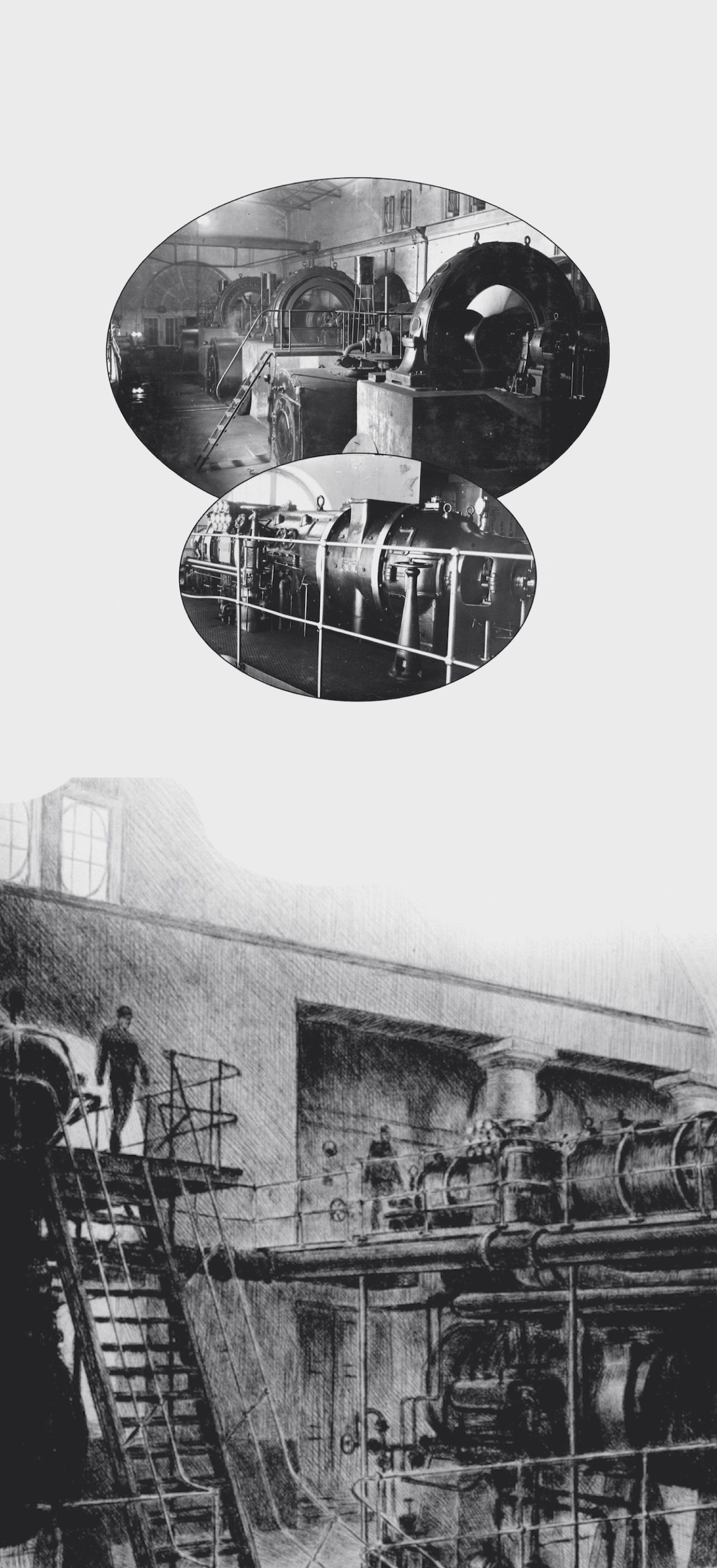Electricity

The Ellamaa power station both produced and distributed electricity. It was the first major power station in Estonia that began supplying electricity to the local industry, i.e. the Ellamaa peat industry, as well as to the other regions of Estonia. In addition to the local 3 kV bog lines, a 15 kV line was built in the direction of Haapsalu, which initially supplied the Haapsalu radio station, and soon the city as well. A 35 kV line was built in the direction of Tallinn, which was the first of its kind in Estonia. The Tallinn line supplied electricity to several state institutions, the industries on the Kopli Peninsula, as well as the Tallinn–Pääsküla electric railway line, the first of its kind in the Baltic States. Thus, the construction of the new electricity networks comprised an important element in the operations of the Ellamaa power station.
Initially, electricity was produced in Ellamaa using three Heinrich Lanz portable engines, one Körting peat gas engine and Siemens-Schuckert generators connected to them. The production capacity of the station was 1400 kW. Since the demand for electricity increased, it was decided to significantly modernise the power plant in 1928. In late 1929, the first modern 2100 kW turbo generator, produced by the Swedish company STAL, was installed. Initially the old portable engines were held in reserve. In the 1930s, they were replaced by additional STAL turbo generators (2800 and 3600 kW). On the eve of World War II, the Ellamaa power plant had reached its highest production capacity of 8,500 kW.
The turbo generators were supplied with steam under 20 units of atmospheric pressure by brand-new steam boilers that were specially designed for the Ellamaa power station by the Franz Krull Machine Engineering Factory in Tallinn. The boiler house, which was built in 1929 for the gigantic, three-story boilers, was further expanded in 1936–1937 when a third boiler was built.
In 1941, some of the equipment was dismantled and taken to Russia. The retreating Soviet army blew up the power plant. As a result of the explosions, the distribution block and most of the equipment of the engine room and boiler house were destroyed. The German authorities put the power plant back into operation by the end of the year, but with a lower production capacity. In 1943–1944, two 3000 kW Brown-Bover turbo generators ordered from Germany were installed. Electricity was produced at Ellamaa with these devices until the station was closed in 1966.
Illustrations:
The initial installation in the power station’s engine room, i.e. three Heinrich Lanz portable engines and the Siemens-Schuckert generators on concrete bases connected to them. These machines generated electricity between 1923 and 1929. MOMU Motorsports Museum
One STAL device was able to produce more electricity than three old portable engine-powered generators combined. In the 1930s, two more STAL turbo generators were installed in the engine room. Turba Library
Ernö Koch. Ellamaa power station, 1937. MOMU Motorsports Museum